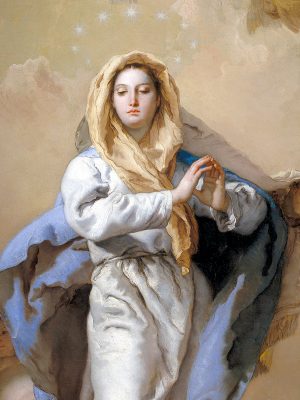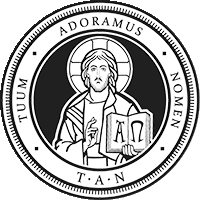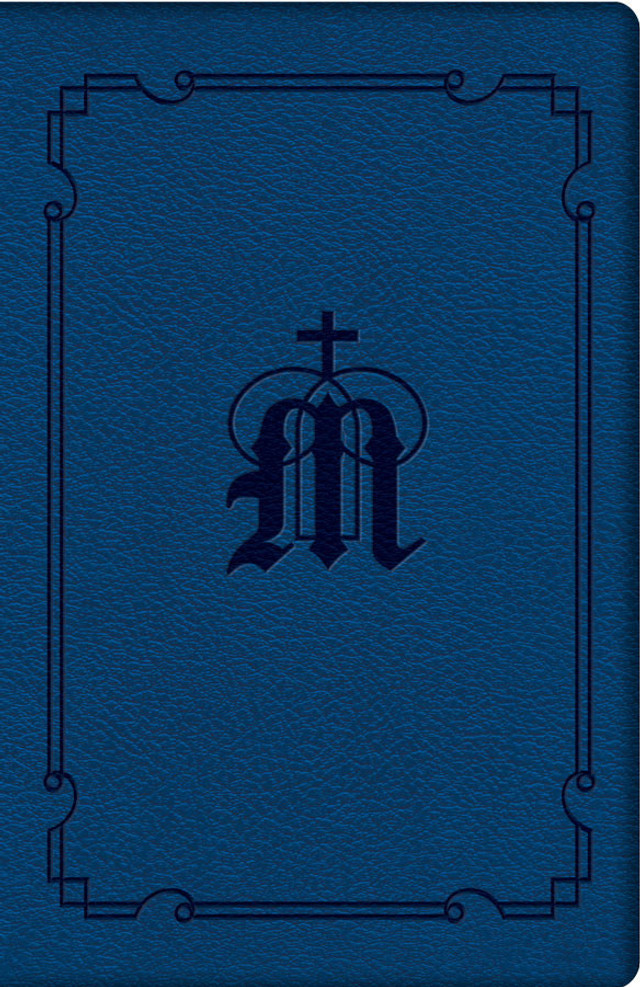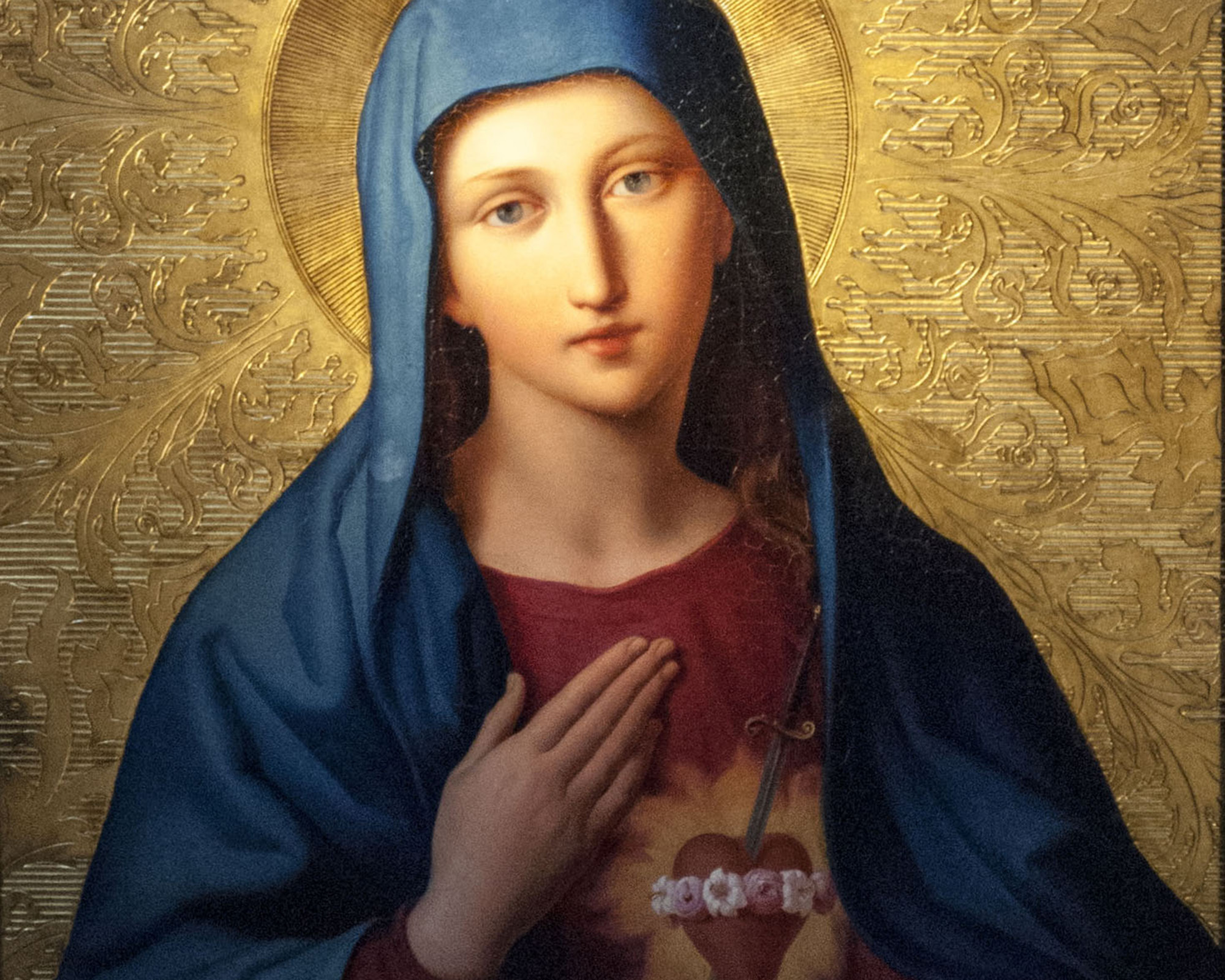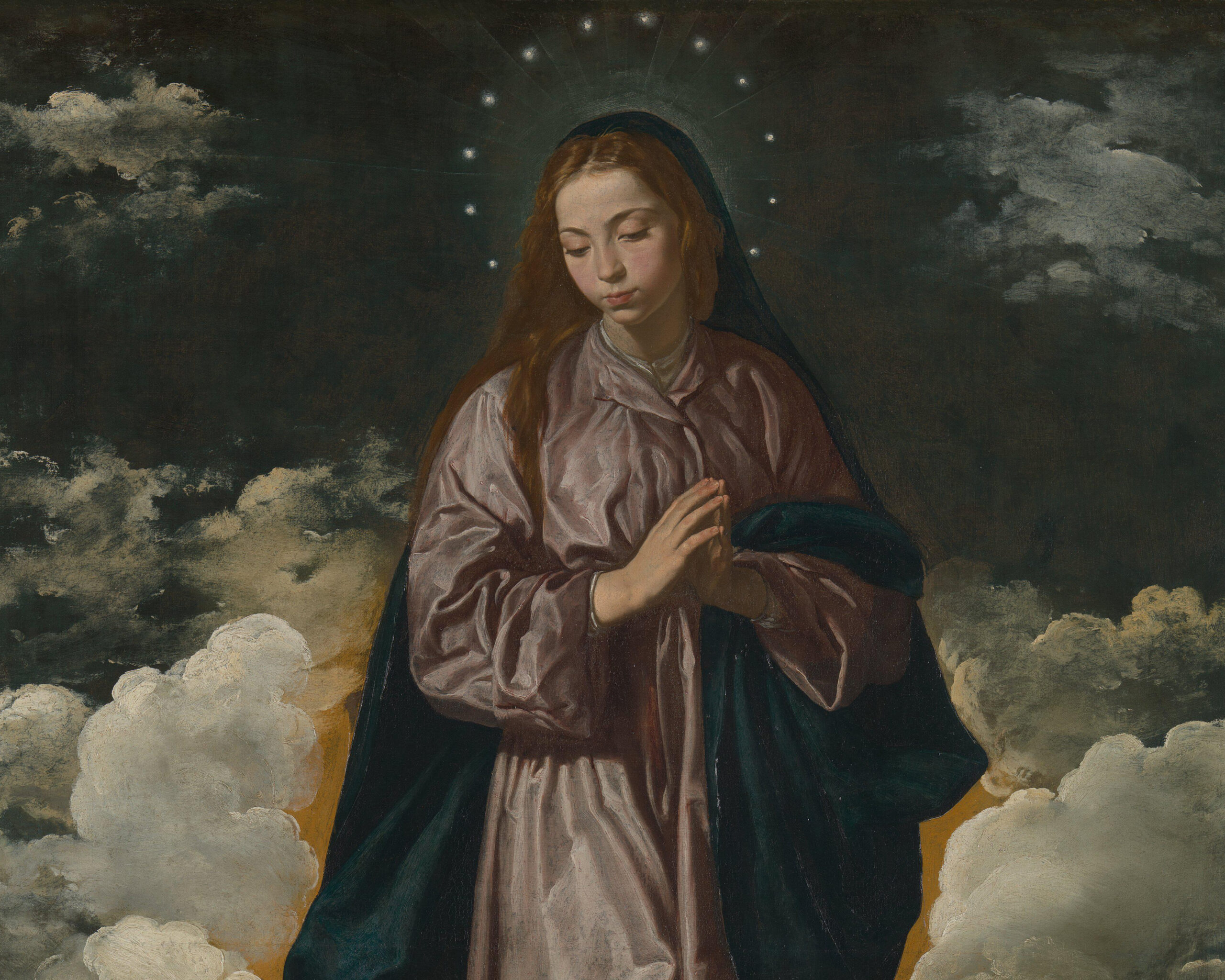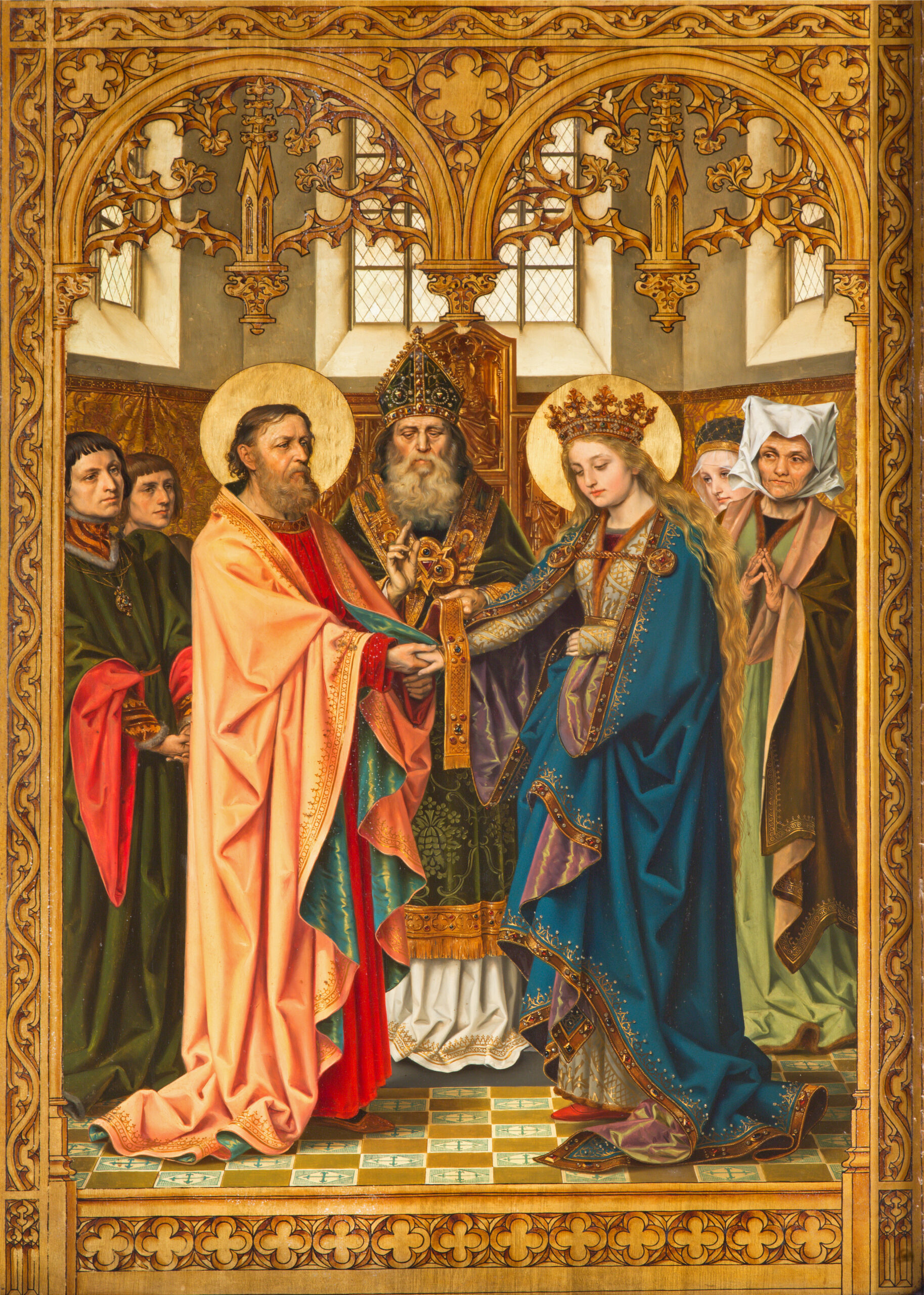The Manual for Marian Devotion nourishes readers with theology, prayers, and spiritual aids that will deepen love for Mary. In this excerpt, the four Marian dogmas are explained, highlighting their theological significance and Mary’s role in salvation history.
The four Marian dogmas formally defined by the Catholic Church blossom from the scriptural witness to Mary’s identity and role. Mary’s close association with Christ in the plan of redemption means that every Marian dogma teaches us more deeply who Christ is and who we are called to be.
Mother of God
The declaration of the most important Marian dogma, that Mary is the Mother of God, emerged from the furnace of a fifth-century theological controversy over the nature of Christ. The bishop of Constantinople, Nestorius, emphasized the distinction between the divine and human natures in Christ so strongly that he seemed to speak of two persons in Christ, one divine and one human.
Mary, he said, was mother not of the divine person but only of the human person. Therefore, Nestorius discouraged the faithful from calling her “Mother of God”; he recommended instead the title “Mother of Christ.” Nestorius’s flock was incensed, and disputes broke out between Nestorians, who called Mary Christotokos, or Christ-bearer, and those who insisted on her revered title, Theotokos, or God-bearer. In 431, an ecumenical council was convened in Ephesus to discuss the question. The Council Fathers ultimately affirmed the unity of Christ: two natures in one divine person. Since motherhood is a relation to a person, not a nature, Mary is the Mother of God the Word, not merely of His human nature. Thus the Council solemnly confirmed her title Theotokos, Mother of God. The people of Ephesus, wild with joy at the victory of orthodoxy, processed through the streets shouting triumphantly, “Theotokos! Theotokos!” To say that Mary is the Mother of God affirms that the human nature that came to be in her womb truly belongs to the person of the Son of God. It does not mean that she is in any way the origin of Christ’s divine nature or a cause of God. Mary’s motherhood of God’s Son lies at the heart of her vocation; it is the first grace to which all other graces given her are related.
Perpetual Virginity
One of those graces is perpetual virginity, the second Marian dogma. The Church teaches that Mary conceived Christ miraculously, through the power of the Holy Spirit. Mary herself inquired about this miracle, asking the angel Gabriel, “How can this be, since I have no relations with a man?” to which Gabriel answered, “The Holy Spirit will come upon you, and the power of the Most High will overshadow you” (Lk 1:34–35).
The dogma also means that Mary preserved her virginity throughout her life. The miracle of Mary’s perpetual virginity is a secondary miracle following upon the Incarnation, so her heart, memory, and body all attest to the wonderful way in which the Son of God became man in her. In her virginity, Mary is an image of the Church, which preserves whole and untarnished the faith entrusted to her by Christ.
This dogma is firmly rooted in the Church’s tradition. Early theologians and Church councils repeatedly affirmed Mary’s virginity. The Nicene Creed identifies Mary as a “virgin,” and the Second Council of Constantinople in 533 called her “ever-Virgin.”
The Church’s understanding was deepened and clarified by a fourth-century dispute on the subject. Opponents of Mary’s perpetual virginity cited New Testament passages mentioning Christ’s “brothers and sisters” as well as a statement in Matthew 1:25 that Joseph did not have relations with Mary “until” she bore Christ, implying that he did so afterward.
In response, St. Jerome penned his treatise The Perpetual Virginity of Blessed Mary, presenting arguments that remain cogent today. For example, the scriptural phrase “brothers and sisters” could mean cousins, according to the Hebraic idiom of identifying all close relatives as brothers. Likewise, the Hebrew “until” does not contain the same implication of future action that the English word does.
From the fourth century onward, belief in Mary’s perpetual virginity remained the norm, and Protestant reformers Calvin, Luther, Zwingli, and Wesley all affirmed it. Only in the most recent centuries have some Protestants rejected it.
Immaculate Conception
In 1854, Pope Pius IX solemnly proclaimed a third Marian dogma, one long held by the faith of the Church, Mary’s Immaculate Conception:
“The most Blessed Virgin Mary was, from the first moment of her conception, by a singular grace and privilege of almighty God and by virtue of the merits of Jesus Christ, Savior of the human race, preserved immune from all stain of original sin.” This definition built upon the recognition of Mary’s holiness that began with the Church Fathers and continued in the medieval debate that clarified both Mary’s sinlessness and her redemption by Christ.
From the first moment of her conception, Mary was filled with the grace of God; correspondingly, this put her at enmity with the devil. She did not suffer the disordered emotions that are a result of original sin, nor did she commit sin herself; but, like Christ, she was able to experience suffering and pain, as well as deep sorrow. The grace of Mary’s Immaculate Conception sprang from the merits of Christ’s redemptive death: Mary was “saved” by Christ. All of her graces, like all of ours, flow from the Cross.
Mary was immaculately conceived for the sake of her mission in the salvation of the world. It was appropriate that the Son of God should become incarnate in the body of a mother who was untouched by sin. Mary’s sinlessness also demonstrates the power of the redemption: She is one person who was fully receptive to the grace of Christ, wholeheartedly available to cooperate with Him as a mother to all the redeemed. In her holiness, Mary is a model for the Church, showing her children the holiness to which they are called.
Mary’s Immaculate Conception can make her seem distant from us. Because sin is so much a part of our human experience, we think that someone who never sinned cannot be fully human. However, the opposite is true. Due to Adam and Eve’s fall, sin is now a part of our human condition, but it actually detracts from our humanness. The saints are the most human of us all, precisely because they are closer to God and farther from sin. Sin darkens our intellect, weakens our will, and disorders our passions. Thus the habitual avoidance of sin and cultivation of virtue strengthen our reason and our will and order our passions toward the good. Like her Son, then, Mary is the most human of all human beings. She felt both joy and sorrow much more keenly than any of us can, precisely because she was fully alive.
Assumption
Finally, the Church teaches that “the Immaculate Mother of God, the ever Virgin Mary, having completed the course of her earthly life, was assumed body and soul into heavenly glory.” This last of the four dogmas was proclaimed in 1950 by Pope Pius XII. Like the Immaculate Conception, it had been cherished for centuries as a truth of faith.
It is fitting that God should preserve from death’s corruption the sinless body that carried within itself His only-begotten Son. Mary shares bodily in the redemption brought by Christ, enjoying the beatific vision of heaven not just in soul but also in body. Her assumption testifies to the power of Christ’s resurrection and to the hope proper to all the members of the Church, who look to their own bodily resurrection at Christ’s second coming.
The Church has never defined whether Mary actually died or was simply transferred to a glorified state at the end of her life. The Eastern Churches beautifully refer to the ending of the earthly period of Mary’s life as her “Dormition,” or “falling asleep,” which was then followed by her assumption.
Mary as Mediatrix
In addition to these four dogmas, the Church also possesses a robust tradition about Mary’s spiritual motherhood of the faithful. This motherhood is rooted in Mary’s divine motherhood, which she accepted at the Annunciation. It also flows from the merits of her loving and obedient life, as well as Christ’s entrusting to her the Church’s members as He hung on the cross. The Second Vatican Council calls Mary “Advocate, Auxiliatrix, Adjutrix, and Mediatrix.” Of course, Mary’s mediatorial role is always to be understood in subordination to that of Christ, the “one mediator between God and men” (1 TM 2:5). Jesus, as God and man, is the single Redeemer of all of humanity, the source and channel of all grace. At the same time, the Church has always held that those who live God’s life can cooperate in the growth of that divine life in themselves and others. St. Paul says, “In my flesh I complete what is lacking in Christ’s afflictions for the sake of His body, that is, the church” (Col 1:24). Mary, as the human person most closely associated with Christ in His work as Redeemer, shares to the highest degree in that work. Her loving obedience throughout her life was a source of merit for the Church; her prayer continues to obtain grace for all mankind. As the new Eve, Mary cooperates with Christ in giving life to all of her children; as the woman of Revelation, she cries out to the Father as the people of God are brought to birth throughout history (see Rv 12:2).
ooo
This article is taken from a chapter in Manual for Marian Devotion by The Dominican Sisters of Mary which is available from TAN Books.


